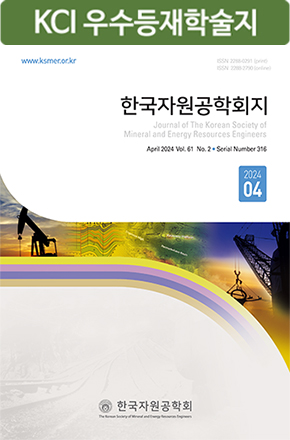Research Paper
Abusamra, H., 2013. A comparative study of feature selection and classification methods for gene expression data of glioma, Procedia Computer Science, 23, p.5-14.
10.1016/j.procs.2013.10.003Al Daoud, E., 2019. Comparison between XGBoost, LightGBM and CatBoost using a home credit dataset, International Journal of Computer and Information Engineering, 13(1), p.6-10.
Breiman, L., 1994. Machine learning, 24, Kluwer academic publishers, Amsterdam, The Netherlands, p.123-140.
10.1023/A:1018054314350Chen, T. and Guestrin, C., 2016. XGBoost: A scalable tree boosting system, Proceedings of the 22nd ACM SICKDD International Conference on Knowledge Discovery and Data Mining, KDD, California, p.785-794.
10.1145/2939672.2939785Duong, A.N., 2010. An unconventional rate decline approach for tight and fracture-dominated gas wells, Canadian Unconventional Resources and International Petroleum Conference, Canadian Society for Unconventional Gas, Calgary, Canada, 15p.
10.2118/137748-MSEkundayo, J.M. and Rezaee, R., 2019. Numerical simulation of gas production from gas Shale reservoirs-Influence of gas sorption hysteresis, Energies 2019, 12(18), 12p.
10.3390/en12183405Federal Reserve Bank of Dallas, 2023.08.30., https://www.dallasfed.org/research/energy11/barnett#region
Fonti, V. and Belitser, E., 2017. Feature selection using LASSO, Amsterdam Research Paper in Business Analytics, 30, p.1-25.
Geng, L., Li, G., Wang, M., Li, Y., Tian, S., Pang, W., and Lyu, Z., 2018. A fractal production prediction model for Shale gas reservoirs, Journal of Natural Gas Science and Engineering, 55, p.354-367.
10.1016/j.jngse.2018.04.025Guo, C., Wei, M., Chen, H., He, X., and Bai, B., 2014. Improved numerical simulation for Shale gas reservoirs, Offshore Technology Conference-Asia, Kuala Lumpur, Malaysia, 17p.
10.2118/24913-MSGuyon, I. and Elisseeff, A., 2003. An introduction to variable and feature selection, Journal of Machine Learning Research, 3, p.1157-1182.
Hall, M.A., 1999. Correlation-based Feature Selection for Machine Learning, PhD Thesis, Waikato University, NewZealand, 199p.
Jain, A. and Zongker, D., 1997. Feature selection: evaluation, application, and small sample performance, IEEE Transactions on Pattern Analysis and Machine Intelligence, 19(2), p.153-158.
10.1109/34.574797Jo, J.H. and Yoon, S.R., 2017. Lasso regression of RNA-Seq data based on bootstrapping for robust feature selection, KIISE Transactions on Computing Practice, 23(9), p.557-563.
10.5626/KTCP.2017.23.9.557Ke, G., Meng, Q., Finley, T., Wang, T., Chen, W., Ma, W., Ye, Q. and Liu, T.Y., 2017. LightGBM: A highly efficient gradient boosting decision tree, 31st Conference on Neural Information Processing Systems, Neural Information Processing Systems, California, USA, 9p.
Kim, J.S., Shin, H.J., and Lim, J.S., 2014. Probabilistic decline curve analysis for forecasting estimated ultimate recovery in Shale gas play, Journal of The Korean Society of Mineral and Energy Resources Engineers, 51(6), p.808-819.
10.12972/ksmer.2014.51.6.808Luo, G., Tian, Y., Bychina, M., and Ehlig-Economides, C., 2019. Production-strategy insights using machine learning: Application for Bakken Shale, SPE Reservoir Evaluation & Engineering, 22(3), 17p.
10.2118/195681-PANew Mexico Bureau of Geology and Mineral Resources, 2007. The Barnett Shale in southeastern New Mexico: distribution, thickness, and source rock characterization, 502, New Mexico tech socorro, , New Mexico, 57p.
Niu, W., Lu, J., and Sun, Y., 2021. A production prediction method for Shale gas wells based on multiple regression, Energies, 14(5), 11p.
10.3390/en14051461Niu, W., Lu, J., and Sun, Y., 2022. Development of Shale gas production prediction models based on machine learning using early data, Energy Reports, 8, p.1229-1237.
10.1016/j.egyr.2021.12.040Oh, H.T., Ki, S.I., Park, C.H., and Jang, I.S., 2021. Analysis of uncertainty trend for estimated ultimate recovery prediction of Shale gas with various production periods based on machine learning, Journal of The Korean Society of Mineral and Energy Resources Engineers, 58(5), p.475-490.
10.32390/ksmer.2021.58.5.475Panja, P., Velasco, R., Pathak, M., and Deo, M., 2018. Application of artificial intelligence to forecast hydrocarbon production from Shales, Petroleum, 4(1), p.75-89.
10.1016/j.petlm.2017.11.003Peng, H., Long, F., and Ding, C., 2005, Feature selection based on mutual information criteria of max-dependency, max-relevance, and min-redundancy, IEEE Transactions on Pattern Analysis and Machine Intelligence, 27(8), p.1226-1238.
10.1109/TPAMI.2005.15916119262Pudjihartono, N., Fadason, T., Kempa-Liehr, A.W., and O'sullivan, J.M., 2022. A review of feature selection methods for machine learing-based disease risk prediction, Frontiers in Bioinformatics, 2, 17p.
10.3389/fbinf.2022.92731236304293PMC9580915Shin, H.S., Nguyen-Le, V., Kim, M., Shin, H.D., and Little, E., 2021. Development of production-forecasting model based on the characteristics of production decline analysis using the reservoir and hydraulic fracture parameters in Montney Shale Gas reservoir, Canada, Geofluids, 2021, 12p.
10.1155/2021/6613410Syed, F.I., Alnaqbi, S., Muther, T., Dahaghi, A.K., and Negahban, S., 2022. Smart Shale gas production performance analysis using machine learning applications, Petroleum Research, 7(1), p.21-31.
10.1016/j.ptlrs.2021.06.003Tan, L., Zuo, L., and Wang, B., 2018. Methods of decline curve analysis for Shale Gas reservoirs, Energies 2018, 11(3), 18p.
10.3390/en11030552U.S. Energy Information Administration (EIA), 2023.08.30., https://www.eia.gov/naturalgas/crudeoilreserves/
Wang, K., Li, H., Wang, J., Jiang, B., Bu, C., Zhang, Q., and Luo, W., 2017. Predicting production and estimated ultimate recoveries for Shale gas wells: A new methodology approach, Applied Energy, 206, p.1416-1431.
10.1016/j.apenergy.2017.09.119Won, J.H., Shin, J.M., Kim, J.H., and Lee, J.W., 2023. A survey on hyperparameter optimization in machine learning, Journal of Korean Institute of Communications and Information Sciences, 48(6), 15p.
10.7840/kics.2023.48.6.733Yeom, J.Y., Kim, H.Y., Lee, K.B., Chang, C.D., and Jo, Y.G., 2023. Detection of borehole breakout depth in image logs using machine learning algorithms, Journal of The Korean Society of Mineral and Energy Resources Engineers, 60(4), p.223-230.
10.32390/ksmer.2023.60.4.223Zhai, S., Geng, S., Li, C., Gong, Y., Jing, M., and Li, Y., 2022. Prediction of gas production potential based on machine learning in Shale gas field: a case study, Energy Sources, Part A: Recovery, Utilization, and Environmental Effects, 44(3), p.6581-6601.
10.1080/15567036.2022.2100521- Publisher :The Korean Society of Mineral and Energy Resources Engineers
- Publisher(Ko) :한국자원공학회
- Journal Title :Journal of the Korean Society of Mineral and Energy Resources Engineers
- Journal Title(Ko) :한국자원공학회지
- Volume : 61
- No :2
- Pages :111-123
- Received Date : 2023-12-07
- Revised Date : 2024-02-28
- Accepted Date : 2024-03-26
- DOI :https://doi.org/10.32390/ksmer.2024.61.2.111



 Journal of the Korean Society of Mineral and Energy Resources Engineers
Journal of the Korean Society of Mineral and Energy Resources Engineers








